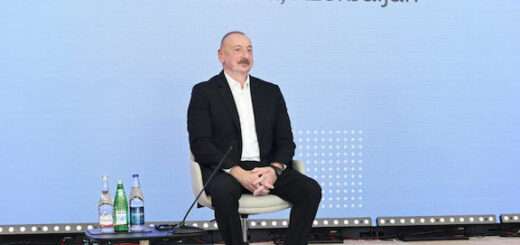Fremont Gold Provides Update on Urasar Exploration Program in Armenia

 Black River target vein textures: A and B, opaline to chalcedonic oxidized veins from the cluster 2 (SE). C and D veins and breccias from the cluster 1 (NW), both show fragments of massive pyrite cemented by chalcedonic, locally banded silica; D shows a highly porous texture.
Black River target vein textures: A and B, opaline to chalcedonic oxidized veins from the cluster 2 (SE). C and D veins and breccias from the cluster 1 (NW), both show fragments of massive pyrite cemented by chalcedonic, locally banded silica; D shows a highly porous texture.
 Brick House target vein textures: A, oxidized quartz vein with chalcopyrite and Cu oxides. B, chalcedonic silica vein with abundant sphalerite. C, vein with chalcopyrite and galena.
Brick House target vein textures: A, oxidized quartz vein with chalcopyrite and Cu oxides. B, chalcedonic silica vein with abundant sphalerite. C, vein with chalcopyrite and galena.
Vancouver, British Columbia (Newsfile Corp) — Fremont Gold provided an update on the 2024 exploration program at the Company’s 100% owned Urasar Project in northern Armenia.
Dennis Moore, President and CEO of Fremont states, “The Company’s initial 2024 Urasar exploration program is well underway. We have completed an initial program of geological mapping and surface rock chip sampling across the southern portion of the Project, where a geochemical survey in late 2023 identified robust gold and copper anomalies over a 15 km strike extent. Recent geological mapping by a porphyry-epithermal specialist confirms a large epithermal precious metal district containing multiple mineralized zones and corroborates Soviet exploration from 70 years ago. The current work program is focused on delineating drill targets for testing later in field season.”
- Urasar hosts a large epithermal gold-sliver district with multiple drill targets;
- Seven key target areas for drill testing have been identified across the southern portion of the Property;
- Target areas include Golden Vein where initial sampling by the Company in 2021 returned up to 12.0 g/t Au from a 5m channel sample, and Oxide Basin which hosts a 100m+ wide zone of mineralized sheeted veining and stockworks;
- Gold-silver mineralization is structurally controlled, intermediate to low sulphidation epithermal style;
- Representative rock chip samples were collected from the mineralized zones and have been sent for analysis;
- The structural setting is a deep-seated crustal corridor that represents the closing of the Tethyan sea, comprising obducted ophiolites thrust over mineralized Tertiary volcanics, which is an analogous setting to the world-class Sotk gold deposit to the southeast ;
Next Steps
A ground magnetometer survey covering the entire 3,392 hectare Project is approximately 35% complete. Grid-based soil sampling across the northern part of the Project is approximately 50% complete and will be integrated with the results of the 770 soil samples collected in late 2023[3] resulting in a 200 m line spaced soil survey over a majority of the Project. Additional geological mapping, surface channel sampling and trenching will be completed based on results from the initial program.
Urasar Geology and Mineralization
Company Advisor and Consulting Geologist, Luis Arteaga, P.Geo., has completed an initial program of geological mapping and rock chip sampling across the southern portion of the Project. The mineralized zones display intermediate to low sulphidation characteristics occurring within a volcanic sequence which lies structurally below an obducted ophiolite sequence. This is an analogous setting to the world-class Sotk gold mine which lies along the same crustal-scale feature to the southeast of Urasar, where the overlying ophiolites act as a structural trap/aquitard to the mineralizing fluids.
Seven key target areas have been identified on the southern part of the Project. In the northwestern portion of the Project these include the Silica West, Oxide Basin, Copper Creek and Golden Vein targets, which occur within the Yellow River trend, and in the southeastern part of the Project, the Black River, Big Gossan and Brick House targets (Figures 1, 2 and 3). Rock chip samples were collected from all initial target areas and assays are pending.
Rock chip sampling highlights from samples collected by the Company during a site visit in 2021 and shown on Figure 1 include 12.0 g/t Au over 5 m from Golden Vein and 15.2% Cu over 5 m from Copper Creek. Both were reconnaissance chip/channel samples.
The key target areas outlined in the southern part of the Project are gold-silver epithermal style mineralized zones, comprising silica-sulphide veins surrounded by illite/smectite/chlorite margins. Pyrite is the most common sulphide mineral, with chalcopyrite and secondary chalcocite observed locally. However at the Brick House target, sphalerite, galena and chalcopyrite are common in a 150 m wide zone of sheeted quartz veins and stockworks observed in a drainage which cuts perpendicular to the mineralized veins.







